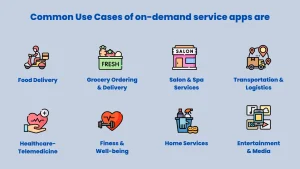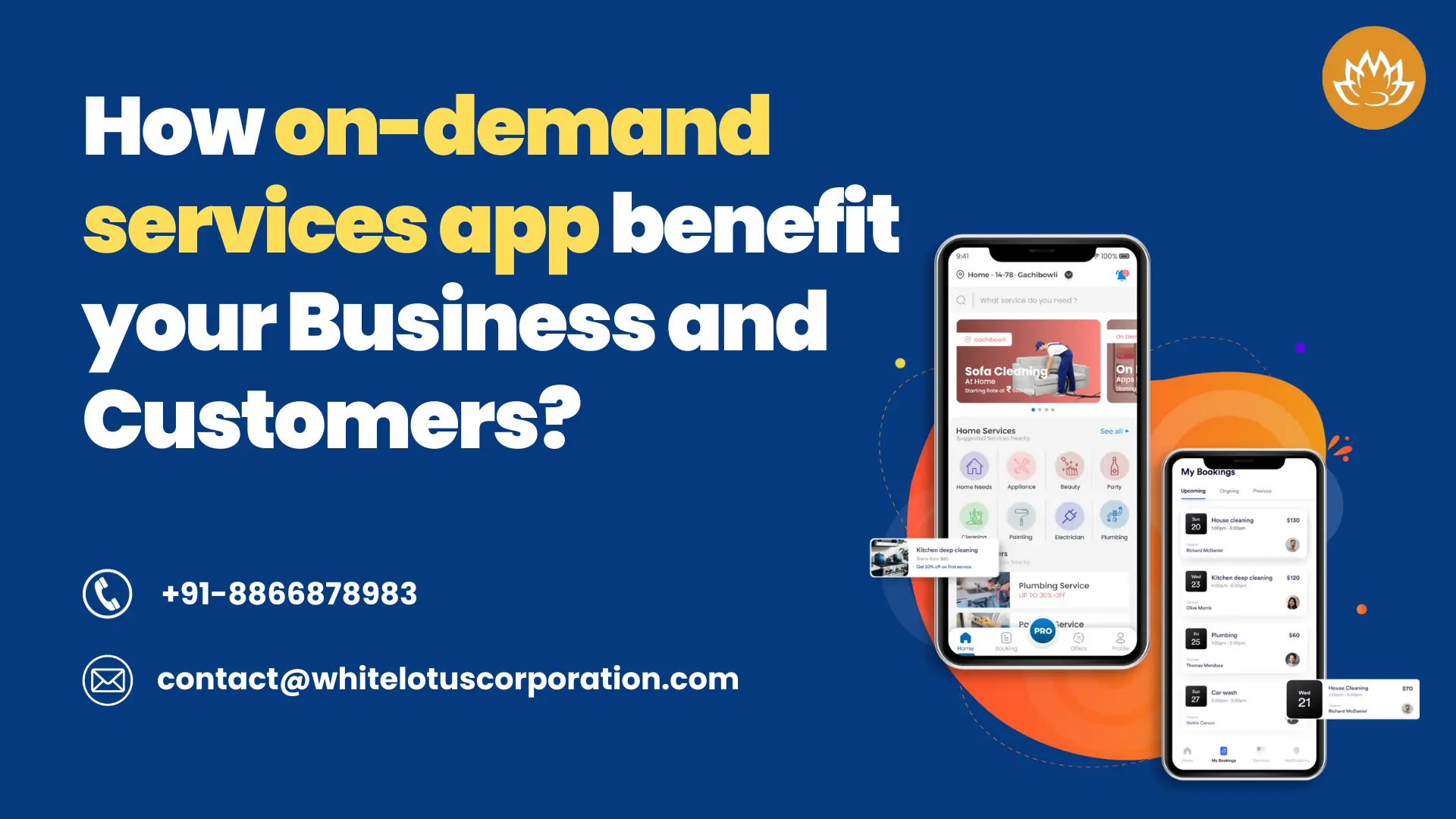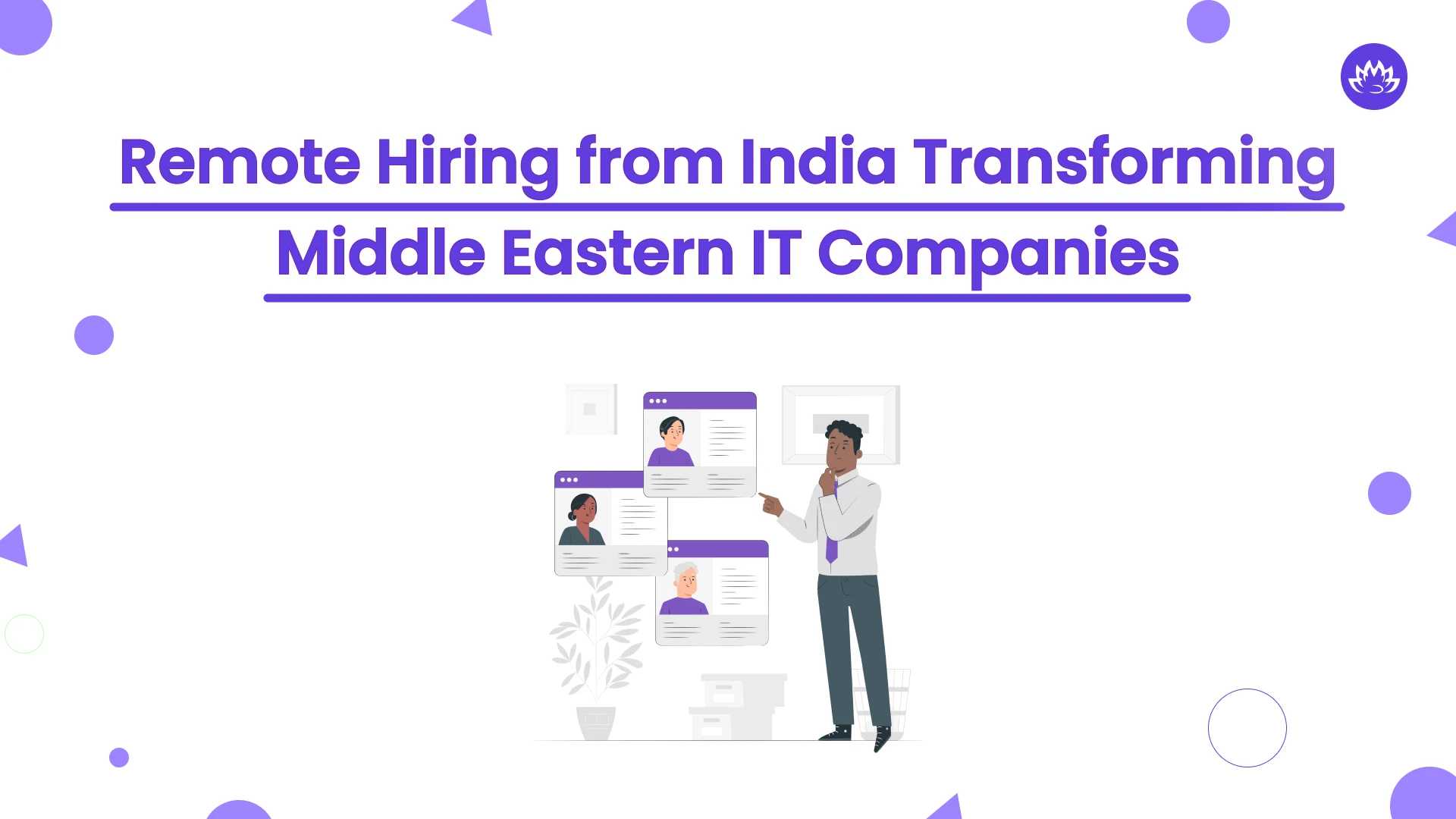Discussing the global market landscape, the onset of the COVID-19 pandemic has wielded a substantial influence on the on-demand services app market, prompting a noteworthy shift in businesses’ focus from traditional brick-and-mortar models to omnichannel trading.
Noteworthy to the world economy, the global on-demand app market is contributing significantly, adding a trillion dollars. Particularly, the United States stands out, channeling an impressive USD 57.6 billion towards on-demand apps.
The surge in startup investments and an evident consumer preference for on-demand services apps are pivotal factors fueling the positive trajectory of market growth. With a staggering 2.14 billion global digital buyers in 2021, this number continues to soar.
For those contemplating the development of an on-demand services app for startups or existing businesses, rest assured, it’s a judicious decision. Valuable insights can be gleaned from industry leaders already dominating the market, showcasing the implementation of astute business strategies that drive substantial business growth.
Here, we present intriguing facts about on-demand services apps, delve into practical use cases, spotlight popular apps currently making waves in the market, and unravel how these apps contribute to the mutual benefit of consumers and business expansion. To kick things off, let’s start with a concise definition.
What are on-demand services apps?
On-demand services apps are web and/or mobile-based service platforms designed to cater to waiting-time-sensitive user-generated demands by independent service providers/contractors.
On-demand models act as a mediator, giving businesses a platform to showcase their products/services and find lead customers; enabling the users to access a wide variety of deliverable products/services.
There are three models of on-demand services apps:
- B2B (Business to Business): It facilitates purchases and transactions between enterprises.
- B2C (Business to Consumers): It facilitates purchases and transactions between providers and consumers.
- C2C (Consumer to Consumer): It facilitates purchases and transactions between consumers.
Some Common Use Cases of on-demand service apps are:

Food Delivery:
The web/mobile apps have digitized the food economy by simplifying the online purchase of ready-made meals and shelf products. Offering an excellent shopping experience and automatizing delivery orders, the online food delivery company financing is to garner USD 20 billion by 2025. Moreover, the global online food delivery market is expected to generate USD 130 billion in revenue, by 2025.
Grocery Delivery:
Every 10th person worldwide prefers to shop for groceries online. ‘Quick delivery at reasonable prices,’ is the key to increased online grocery sales. With the evolution of omnichannel retail, e-commerce sales are gaining traction and are very likely to remain popular in the coming years.
Salon & Spa Services:
The Covid 19 pandemic has changed the definition of the gig economy. Salon & Beauty services are now not limited to brick & mortar. Home–beauty-on-demand applications are intended to offer professional beauty Salon & Spa services at a reasonable price. These are customer-centric apps designed to deliver services according to the customer’s comfort and convenience.
Healthcare & Telemedicine:
Advancement in technologies with AI/ML and automation has done wonders in the healthcare industry. The fact that doctors can treat patients remotely with the help of telecommunication, has leveraged medical facilities on a global level. The global Telemedicine market has gained momentum, especially during the corona pandemic, hiking up from USD 50 billion in 2019 to USD 460 billion in 2030. Along with this, the number of telemedicine users is to increase 20-fold in the coming years.
Fitness & well-being:
With an increasing inclination towards a healthy lifestyle, precisely customized on-demand health & fitness apps are highly trending. Personal trainers, personal dieticians, customized workout plans, and an option to choose from a variety of fitness activities; are all available with just a tap at the user’s convenience. On-demand, fitness apps are to score high due to flexibility, reliability, convenience and easy booking & payment options.
The global digital fitness market is to garner USD 81.67 billion by 2022 growing at a CAGR (Compound Annual Growth Rate) of 12.4% from 2022 to 2027.
Transportation & Logistics:
The on-demand transport services cover both passenger transport and goods transport. Dial-a-ride with taxi e-hailing platforms is consistently upscaling owing to higher flexibility, agility, as well as broader reach.
Home Services:
Accelerating at a CAGR of 53%, on-demand home service apps are soaring high with increasing demand for services like house cleaning & repairs, babysitting, pet care, packing & moving, etc. With key players taking over the market, the major factor driving the growth of on-demand home services is proliferating startups.
Entertainment:
Netflix, Hoot, Amazon Prime, Spotify and other on-demand entertainment services have changed the direction of entertainment. Emerging trends in OTT have eliminated the dependency on big screens. Audio & Video-on-demand services are entertaining their audience by offering tailored content in TV shows, podcasts, online music, documentaries, web series, movies, etc.
Some of the Most Popular on-demand services apps are listed below:
You can sell your products/services only when there is someone to buy them on the other end. So, let us unclose the hidden benefits of on-demand services apps from the user-end as well as from the provider-end.
- Fiverr
- Urban Clap
- Uber
- Swiggy
- Netflix
- Spotify
- Airbnb
- Medicase
- Rover
- Instacart
- Grofers and more…
How On-Demand Services Apps are Beneficial For Business Growth?
User Data Analytics:
You have a complete report of user activities: what users find attractive, what is distracting them from making a purchase, and what are their likes, dislikes, reviews or feedback? By thoroughly analyzing user behaviour you can draw out specific behavioural patterns. This data can prove extremely helpful while devising business strategies and marketing plans.
Moreover, using this data you can identify the most popular or not-so-popular products/services as per user choice and review. This helps in scaling your solutions accordingly.
Flexibility:
Data analytics gives you a clear understanding of your audience, ongoing market trends, and your current channels. Based on this you can devise market-driven strategies, make smart assumptions, or opt for personalized marketing. You can also strategize bonuses, rewards, discounts, offers, loyalty points, or cashback offers by using the inbuilt recommendation engine of your app.
Dynamic & Scalable:
Be it large-scale businesses or SMEs, on-demand services apps cater requirements of all types of businesses. On-demand, apps are dynamic and highly scalable. Initially, you can start by building an app to suit your business goals. In future, you can host your platform and invite other businesses to market their products/services on your app by charging commission fees in exchange. By doing this you can multiply the revenue generation through your app as well as increase its popularity.
Easy Booking:
With one tap you can confirm bookings and orders or schedule appointments with your clients. On-demand services apps help you overcome your traditional working systems where data regarding schedules, appointments, or orders were maintained manually on paper.
Safe & Secure:
Users have to register with on-demand services apps before they start using them. These apps hold user-sensitive data that have a high chance of misuse. The safety and security of on-demand apps become crucial. Strict authorization, authentication, and password confidentiality can help in building high-security walls across the database.
Boosts Business Growth:
Consumers are ready to spend on online products/services. All you need is an excellently designed app, a great marketing strategy, a clear CTA, and a well-managed consumer support system. By this, you can expect over 30% conversion rates to boost the potential growth of your business.
Moreover, agility, flexibility, scalability, and user data analytics can help in retaining customers, encourage repeated orders, and increase consumer satisfaction, leading to increased business opportunities.
Improved Customer Support:
Users now prefer online communications rather than making calls for consumer support services. Integrating a user-friendly chatbot can easily solve this problem. The chatbots can carry out seamless communications to provide customer support and carry forward the conversation to a human representative in case of serious issues. This can help you save costs, energy, resources, and time.
Feedback System:
Users can post reviews, feedback, and testimonials depending on their experience with your brand. Positive feedback can help you fetch more customer leads and negative feedback can help you identify & improve the weak areas. Anyway, it is a win-win situation.
Cost-effective:
It is expensive and time-consuming to build, develop, and deploy fully functional apps as compared to on-demand apps. Building an on-demand app can be a great idea as it caters to user demands cost-effectively.
Helps raise funding:
Especially for startups, investors are ready to invest in promising startup businesses opting for on-demand services apps, because ROI (Return on Investment) is guaranteed.
How do on-demand services apps benefit Consumers?
Easy to order, Easy to cancel:
On-demand apps are user-friendly and customer oriented. Users can stream through a wide pool of options, choose selective products/services, and even ask for customization. With one tap they can place an order or schedule an appointment, at their convenience.
In case there is a change of mind, they can easily cancel orders and reschedule appointments with one click. Subscribing or unsubscribing is also as easy as that.
Real-time order tracking:
After placing an order or scheduling an appointment, users can check the status of whether it is approved, rejected, scheduled, arriving, or cancelled. This eliminates the need for two-party communication, saving time and resources.
Also, on-demand, apps are integrated with the GPS navigation system. Users can easily and accurately track the live location of their orders.
Hassle-free payment options:
On-demand apps are integrated with expanded payment options for enabling purchases through credit, debit, or visa cards. Besides, modern payment methods like mobile wallets and cryptocurrencies make it a pro.
No Cost EMIs:
A major benefit of on-demand services apps on the consumer front is that users can avail No cost EMIs in a few clicks and pay for their purchase in interest-free instalments.
Push Notifications:
It is completely a consumer’s choice whether to receive updates on upcoming offers, discounts, rewards, etc. via push notifications or switch to DND (Do Not Disturb) mode.
Conclusion
The transformative power of on-demand services apps extends far beyond mere convenience; it reshapes the very fabric of how businesses operate and how customers interact with services. For those navigating the competitive landscape of IT services, embracing and optimizing the potential of on-demand apps is not just a strategic move—it’s a requisite for staying at the forefront of innovation.
As the demand for seamless, personalized experiences continues to surge, businesses that harness the true potential of on-demand services apps are poised for sustained success and growth.
Also read:
Author
-

Whitelotus Corporation is a creative digital software, web and top mobile application development company focused on building next generation disruptive digital products.
View all posts












